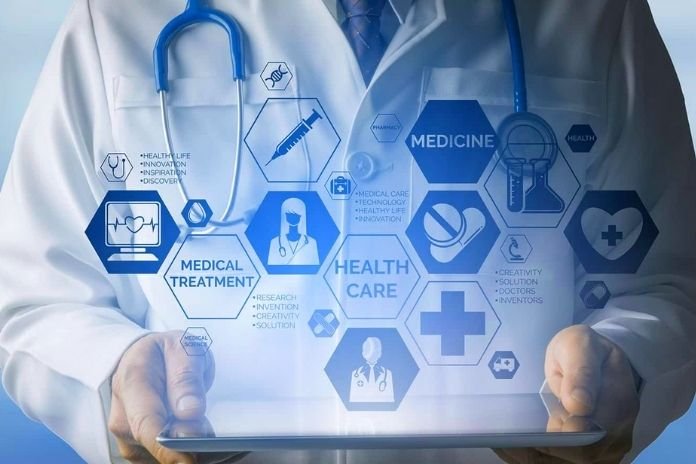The Use Of IoT Applications In Medicine
The IoT applications will change everyday life inside & outside the home, in the countryside & industries, and also various companies. Incidentally, IoT in medicine, specifically, gained significant prominence in 2020.
This solution was one of the essential resources in the efforts related to the pandemic, both in the control of infected people and in a hospital or distance care.
This technology alone is already highly relevant in digital transformation, but it still has a lot to grow. One of the significant differentials of the internet of things is generating and using data to transform (for the better) the activity, equipment or processes monitored. Enabling a simple connection to automation, this innovation is one of the leading technological trends for the healthcare area in the coming years. This is because it has the potential to act as a great ally within offices, clinics and hospitals.
What Are IoT Applications?
To exemplify, smartphones, smartwatches, and smart TVs add “smart” in the names precisely due to the use of IoT. After the massive digital transformation of 2020, this innovation was mainly driven by providing means to continue activities remotely. IoT in medicine has evolved to monitor patients with less need for physical contact.
It was also crucial for helping to control the flow of people in physical establishments during and after the isolation measures resulting from the pandemic. Therefore, its benefits have not gone unnoticed.
According to the 2020 Gartner IoT Implementation Trends, despite the economic impact of Covid-19 on business, 47% of companies that participated in the survey, from the most diverse sectors, plan to increase investments in the internet of things.
A Growing Number Of IoT Connections
Today, the volume of connected devices has already reached 10 billion worldwide. However, the prediction of the study The Internet Of Things 2020, published by Business Insider Intelligence, is that, by 2027, this volume will quadruple, reaching 40 billion. As a result, this market as a whole is also expected to grow by an average of more than US$ 2.4 trillion annually.
However, IoT is increasingly comprehensive and continues to be a good innovation for many areas. This is because, from the data generated by each connected equipment, the points of improvement that can bring more efficiency, agility and productivity to the operation become visible.
The IoT Applications In Medicine
Many tools and technological solutions have been applied in healthcare for some time. But the pandemic has brought a new panorama to medicine.
Among the prominent examples of the initial moment of the crisis are robots used for care in hospitals, drones to monitor temperatures and teleconsultations to avoid face-to-face contact. All of them adopted the Internet of Things at some stage of the process.
Telemedicine: A New Model Of Care In The Pandemic
In this scenario, doctors and patients can start or continue care safely through a device such as a tablet, smartphone or computer and access to a stable connection.
It is worth mentioning that the use of IoT in medicine focused on remote care has evolved a lot during the pandemic. Therefore, through telehealth platforms, it is now possible to add data captured by digital equipment during the remote consultation to the patient’s medical record and even remotely enable the issuance of reports.
Above all, it is a precious resource for those who do regular follow-ups, such as people with diabetes and blood pressure problems.
Therefore, telemedicine should also be a trend for the coming years. After all, almost a third of consumers are interested in continuing to use this post-pandemic model, according to an IDC report published in October 2020.
Other Uses Of IoT Applications In Medicine
To better illustrate how IoT in medicine can be beneficial for professionals and patients, we separate some examples.
Quality Standard
Connected devices can help track process compliance. According to the Gartner report on IoT implementation trends, 23% of companies already use the internet of things.
In the case of healthcare organizations, this includes monitoring the hygiene of professionals’ hands and the sterilization of medical instruments.
Keeping An Eye On The Team
Within hospitals and clinics, due to the nature of the work performed there, it is also essential to pay attention to the health of professionals.
Through wearables, for example, it is possible to monitor the stress level of employees to rearrange the team to manage factors such as pressure and overload.
Hospital Supplies Management
The management of supplies, equipment and medicines is necessary for the proper functioning of a hospital. This is both in terms of the quality of consultations, which will harm if any material is missing and mitigate the waste of these products.
In this sense, there are IoT solutions in healthcare that can assist in tracking and controlling inventory, ensuring better management, and adding a security step.
Digital Exam Records
Another widespread use is digital devices for diagnostic tests. For example, it is worth mentioning the X-ray, tomography and electrocardiogram.
With the Internet of Things built-in, these devices can generate and store data, making it easier to share with healthcare professionals. In addition, they can avoid having to move the patient to retrieve these results.
Smart Cardiac Pacemaker And Continuous Glucose Monitor
Some IoT devices that will implant in patients are already in use in the US, such as cardiac pacemakers and the Continuous Glucose Monitor or CGM.
Also Read: The Role Of Cybersecurity In An IoT World
Share this content:











Post Comment